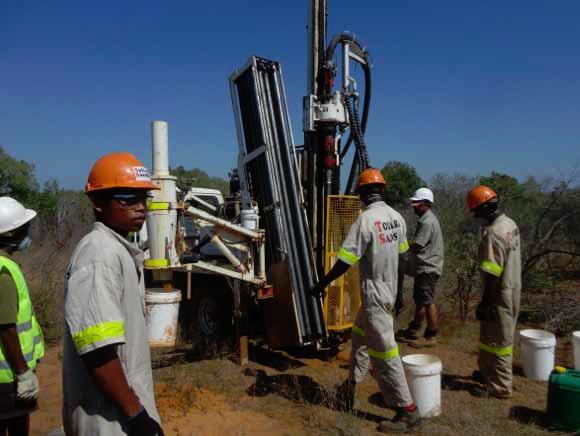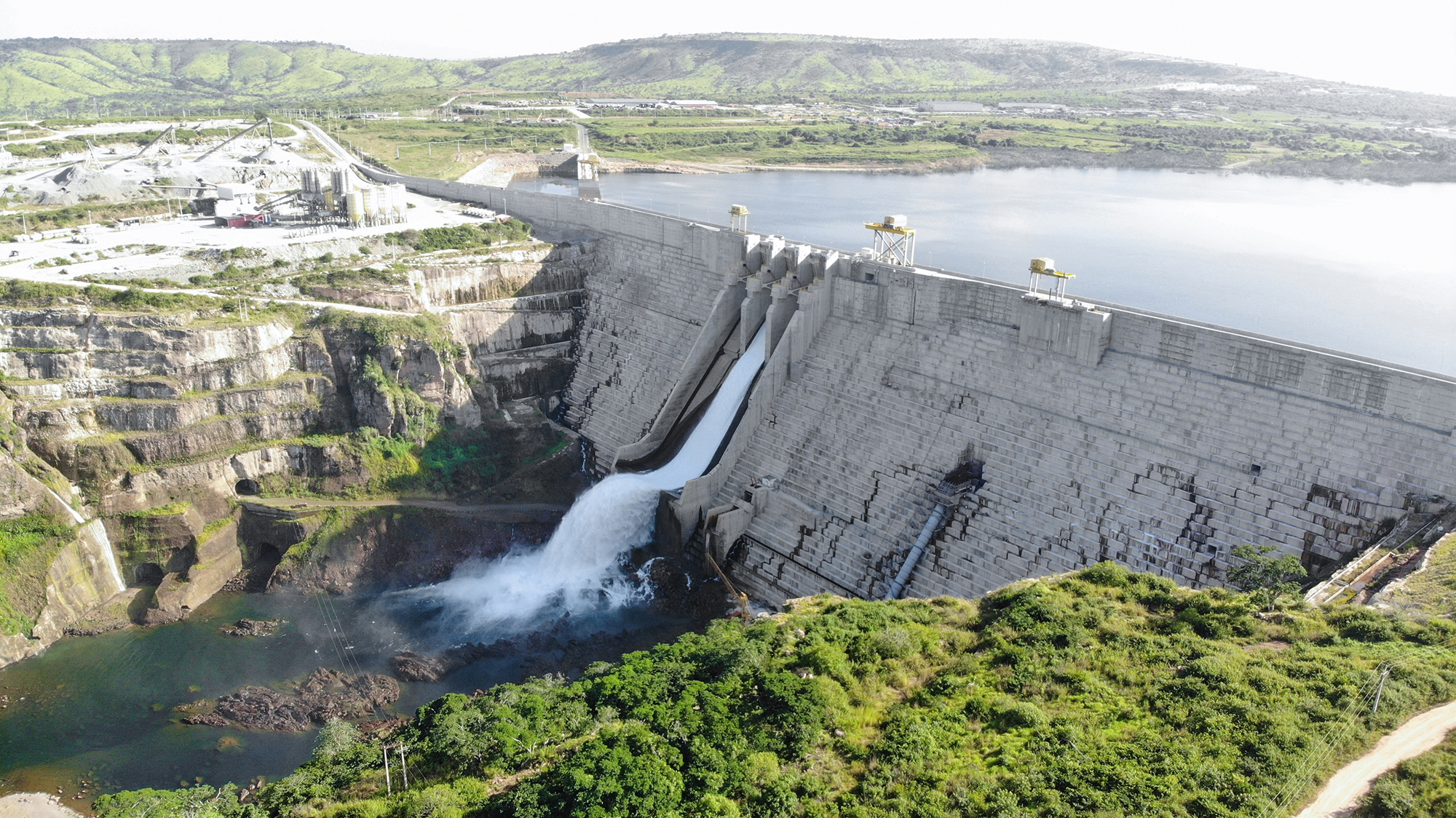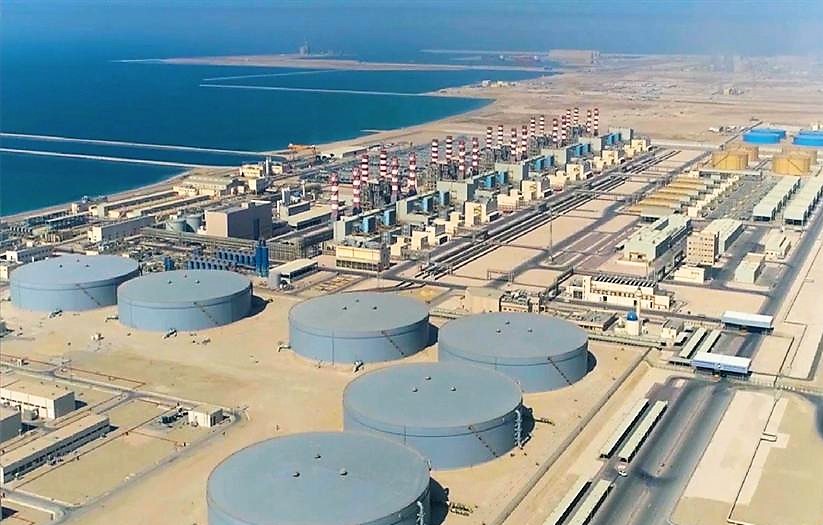
CEO Bruce Griffin talks about the potential of a highly expandable, high-grade mineral sands project in Madagascar.
World Titanium Resources is developing the Toliara Sands Project in southwest Madagascar. Initial exploration work was carried out in 1999, leading to the discovery of mineral sands at Ranobe and further north at Ankililoaka, Basibasy and Morombe. Further drilling was undertaken in the next few years and it became clear that the area had the potential to become a significant mineral sands development.
The first phase of development is the Ranobe Mine, which is projected to produce 407,000tpa of ilmenite and 44,000tpa of zircon rich concentrate over an initial 21 year mine life, but the 959 million tonne resource at 6.1 percent THM (total heavy minerals) has the potential to sustain a life of over 100 years at the planned initial production rate.
“We have 100 years of resource and that’s where the potential value is!” says CEO Bruce Griffin. “That’s one of the things I like about this deposit! What it means is that once we have delivered the first phase, we will be in a position to add real additional value by implementing relatively low cost expansions without rebuilding the infrastructure. We can do this and maintain a long mine life. If you have a one hundred year resource and you triple production, you still have a mine with a 30 year life! It’s not like you’re taking a 20 year mine and turning it into a six year mine. We still have a multi-decade development even at large scale production rate.”
The Ranobe Project spent six years as a joint venture with Exxaro Resources, during which $17 million was spent on a completed pre-feasibility study and most of a bankable feasibility study. Exxaro terminated the JV in July 2009, due to a number of factors including the global financial crisis, the March 2009 political crisis in Madagascar and concerns about technical problems with their South African smelter that had been envisaged as the destination for the project’s minerals.
Following Exxaro’s exit, WTR re-examined the business case and opted to build a low cost, low risk mine at Ranobe to supply ilmenite, zircon and rutile directly to world markets. The feasibility study had highlighted a high grade portion of the deposit, so it was decided to focus initial development on this area.
“The primary driver of low cost is high grade,” explains Griffin, “because it means you move a lot less material around for a ton of product. We only envisage doing eight million tons a year of mining, whereas there are comparable projects that will do over 50 million tons a year of sand movement. Our low capital and operating cost is basically down to grade.”
The whole development concept is based on keeping it simple. “Our separation processes are very basic, using gravity and magnetic separation with a little drying,” he explains. The mine will produce sulphate ilmenite, the most common form of titanium dioxide, chloride ilmenite and a zircon rich concentrate that also contains rutile. “Titanium dioxide (ilmenite and rutile) is used in pigment production, as feedstock for titanium metal and welding rods in the case of rutile,” says Griffin. “Zircon is used as an opacifier in ceramics and it also has foundry uses as a refractory material and in speciality chemical applications.”
The decision to sell a zircon rich concentrate fits the philosophy of keeping things as simple as possible. Some operations separate the zircon and rutile and sell them as separate finished products, says Griffin, but WTR has chosen not to do that because the separation adds operational complexity. The concentrate sells for around a 20 percent discount to final product value, so it makes sense to sell the zircon and rutile as a concentrate as it allows WTR to minimise the complexity of the project while capturing most of the value.
New projects in places like Madagascar can often experience difficulties in the recruitment of skilled workers, or in finding locally qualified suppliers to satisfy their service needs. Griffin believes that WTR will benefit immensely from the major projects being carried out by Ambatovy and Rio Tinto, as they are creating an on-going helpful legacy.
WTR will no doubt need to use some expat workers in the early stages, but the plan is for their specific industry experience to be put to use in training local workers. “Both Ambatovy and Rio Tinto have found that the Malagasy people are very trainable,” says Griffin. “You can equip them quite quickly with the skills they need to become an effective part of the workforce.”
An interesting example is the contractor that operates the haul road for the Rio Tinto QMM project. “They have no expats left in their operational workforce after less than five years’ operation,” says Griffin. “The operating crew are all locals. They brought in experienced drivers from South Africa for three months to drive with a Malagasy in each truck. For the first six weeks the expat did the driving, then for the second six weeks the local was driving and by then they were basically trained up.”
Doing business in Madagascar has changed in other ways, too. “There are contractors and service providers established in Madagascar now that weren’t there five years ago. If you need someone to service a seal on a pump, or supply a piece of heavy mobile equipment, it’s more likely now that you can find someone a day away in Madagascar rather than having to bring them in from South Africa or somewhere else. It’s easier for us to work in Madagascar now than it would have been before those projects began.”
As Griffin points out, there are significant differences of scale between Ranobe and these other projects. “We expect our construction workforce to be in the hundreds, not the thousands,” he says, “and our operational staff, including contractors, is probably going to involve only 300-350 people. It is important we maximise employment in the communities in which we operate.”
From an environmental and social point of view, WTR has to deal with the same issues as any other mine, but the differences in scale are evident here, too. The company recently hired a corporate social responsibility manager who previously worked for Ambatovy. “You can’t do a mining project without making an impact,” says Griffin, “so it’s about how you manage that. Ambatovy had 200,000 people affected by their project, whereas our directly affected numbers are only in the hundreds.
“The other fortunate thing about mineral sands mining,” he adds, “is that even with our high grade mineral resource, 90 percent of what you mine is just sand. You pick it up, you take the heavy mineral out and you put the sand back where you found it. You rehabilitate as you go, so you don’t end up with a huge hole in the ground at the end of the mine life.”
It’s no surprise that the local communities are supportive of the project because they can see it as an opportunity for economic development, but one of WTR’s key focuses is making sure that it maintains their support.
www.worldtitaniumresources.com
Written by Martin Ashcroft, research by Robert Hodgson



 WorldTitanium-Africa.Mining-Feb13-Bro-s.pdf
WorldTitanium-Africa.Mining-Feb13-Bro-s.pdf









